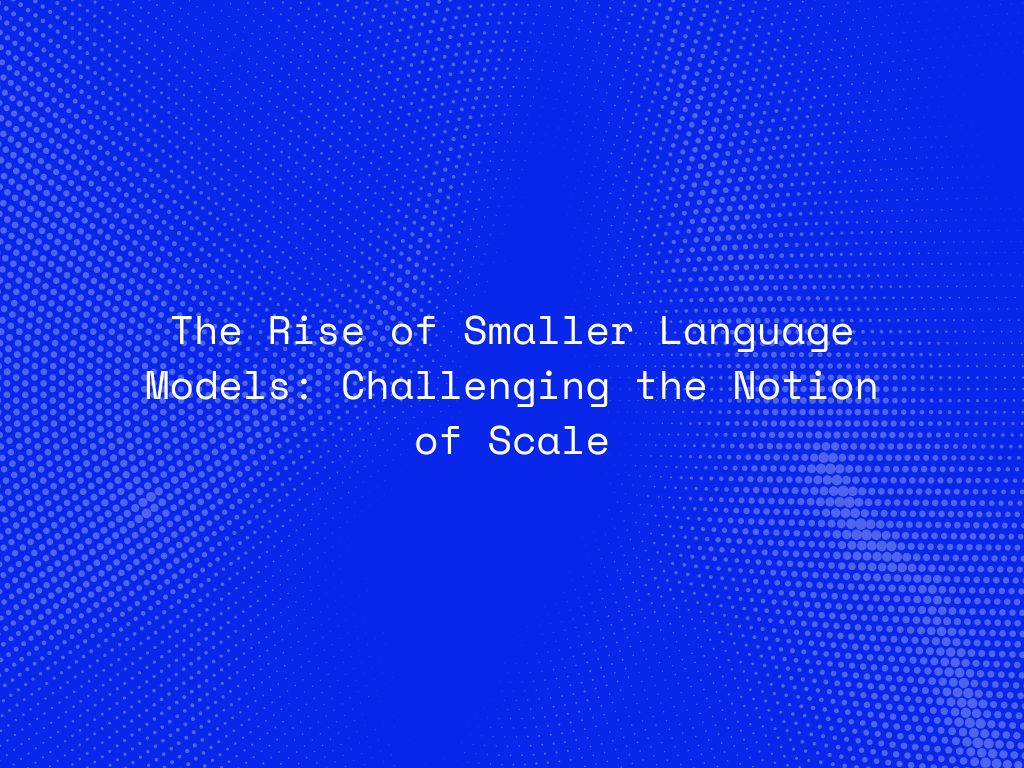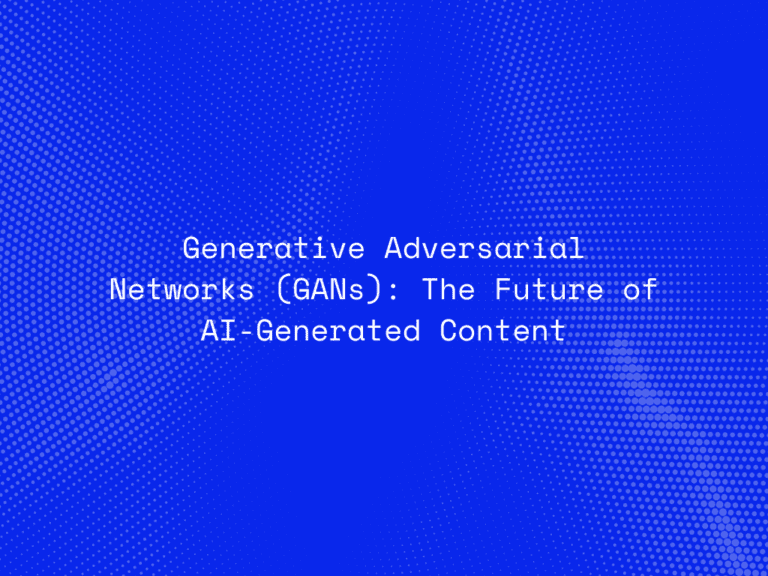In recent years, the AI landscape has been dominated by large language models (LLMs) such as GPT-4, BERT, and T5, which boast billions of parameters and achieve impressive feats in natural language understanding and generation. However, as organizations and researchers seek more efficient, cost-effective, and accessible AI solutions, the focus is increasingly shifting towards smaller language models.
These smaller models challenge the conventional belief that “bigger is always better” in AI, showing that powerful results can be achieved with a more strategic approach to architecture and optimization. In this blog, we’ll explore the rise of smaller language models, why they are gaining traction, and how they are redefining the future of AI.
What Are Smaller Language Models?
Smaller language models refer to neural networks with significantly fewer parameters compared to their larger counterparts. While the largest models can have hundreds of billions of parameters, smaller models may operate with a fraction of that, yet still deliver high-quality results. Through knowledge distillation, pruning, and optimization techniques, smaller models maintain strong performance while reducing computational demands.
Why Smaller Language Models Are Gaining Popularity
The growing interest in smaller language models stems from several factors, including efficiency, cost-effectiveness, and accessibility. Let’s break down the key reasons behind their rise:
1. Efficiency and Resource Optimization
One of the primary advantages of smaller language models is their computational efficiency. Large language models require substantial computational resources, memory, and energy to train and deploy, making them inaccessible to many organizations. In contrast, smaller models can be trained and run on lower-resource environments like consumer-grade GPUs, edge devices, or even mobile phones.
For example, models like DistilBERT retain a significant portion of the performance of the original BERT model while operating with nearly half the parameters, resulting in faster inference times and lower energy consumption.
2. Lower Costs
Training and deploying large models involve high hardware costs, including the need for powerful GPUs or TPUs and cloud infrastructure. Smaller models offer a more cost-effective alternative, especially for businesses that need AI capabilities but don’t have the budget to invest in large-scale models.
For startups, smaller organizations, or academic research groups, smaller models can deliver competitive AI performance without the financial burden of supporting massive computational infrastructure.
3. Environmental Impact
The energy consumption associated with large models raises concerns about AI sustainability. Smaller models offer a more environmentally friendly option by reducing the carbon footprint associated with training and inference. As AI becomes more widespread, the need for sustainable, energy-efficient models is paramount to mitigating the environmental impact of AI technology.
4. Fine-Tuning for Specific Tasks
Smaller language models are often easier to fine-tune for specific tasks or domains. While large models are typically pre-trained on massive general-purpose datasets, smaller models can be fine-tuned more quickly and with fewer resources to excel in domain-specific applications. This makes them highly effective for businesses looking to deploy AI solutions that are specialized for industries such as healthcare, finance, or customer service.
5. On-Device AI
With the rise of edge computing and on-device AI, there is a growing demand for AI models that can run efficiently on local devices without needing to connect to cloud servers. Smaller models, due to their reduced computational demands, are ideal for powering AI applications on smartphones, IoT devices, and embedded systems. These models enable real-time AI processing and decision-making, which is crucial for latency-sensitive applications such as autonomous driving, voice assistants, and augmented reality.
Connect With Us
Examples of Popular Smaller Language Models
Several small language models have emerged as alternatives to large models, offering strong performance with far fewer resources:
-
DistilBERT: DistilBERT is a smaller, faster version of the BERT model, achieving 97% of BERT’s performance while using only 60% of its parameters. It’s a prime example of how knowledge distillation can reduce model size without sacrificing too much accuracy.
-
TinyBERT: A further distilled version of BERT, TinyBERT is optimized for real-time applications like mobile and web-based AI, maintaining high performance while being compact enough to run efficiently on edge devices.
-
MobileBERT: Designed specifically for mobile and edge computing, MobileBERT provides a lightweight architecture that performs comparably to BERT but is optimized for lower latency and smaller devices.
-
ALBERT: ALBERT (A Lite BERT) is an even smaller version of BERT that uses parameter sharing techniques to reduce the number of parameters, making it faster and more efficient for specific NLP tasks.
Small Models vs. Large Models: Breaking the Scale Myth
The rise of smaller models doesn’t necessarily negate the value of large models, but it does challenge the assumption that bigger models are inherently better. There are distinct trade-offs between large and small models, and the decision to use one over the other depends on the specific use case, resources available, and performance requirements.
1. Task-Specific Performance
Large models generally perform better across a wide range of general tasks due to their massive training datasets and parameter counts. However, for narrow tasks or specific domains, small models can outperform large models when they are fine-tuned appropriately. For instance, a smaller, fine-tuned model might outperform a large, general-purpose model in tasks like legal document analysis, customer service chatbots, or medical diagnosis.
2. Training Time and Costs
Large models can take weeks or even months to train, and the associated costs can be prohibitive. Small models, on the other hand, can be trained in a matter of hours or days, with significantly lower infrastructure requirements. This faster training time allows for rapid iteration and experimentation, which is especially valuable in fast-paced industries like tech startups.
3. Deployability and Scalability
Smaller models are easier to deploy across a variety of platforms, including mobile devices, IoT systems, and embedded platforms. Their lightweight nature makes them more scalable, especially in environments where computational resources are limited. For global applications, where latency, bandwidth, and computational power vary, small models provide an advantage in terms of flexibility and deployability.
4. Human Readability and Debugging
With fewer parameters, small models are generally more interpretable and easier to debug. This is a critical advantage for applications where explainability is important, such as legal or medical AI systems. Debugging a smaller model is often simpler because the number of parameters is more manageable, and detecting biases or errors becomes more feasible.
Connect With Us
Challenges and Considerations
While smaller language models offer many benefits, they also come with certain challenges:
1. Trade-offs in Accuracy
Smaller models can sometimes lag behind large models in terms of raw accuracy, especially for complex tasks that require deep understanding or reasoning. However, for many applications, the trade-off between performance and efficiency is acceptable, especially when the use case demands real-time processing or lower resource consumption.
2. Bias and Fairness
Smaller models, like large models, are susceptible to the biases present in their training data. However, because they are often trained with fewer parameters, biases may become more pronounced in their outputs. Developers need to pay careful attention to the training data and implement measures to mitigate bias and ensure fairness in model outputs.
3. Limitations in Generalization
While smaller models excel in domain-specific applications, they may struggle to generalize across multiple tasks or domains as effectively as larger models. For businesses requiring a single model to handle diverse tasks, a larger model may be more suitable, though smaller models could still offer specialized performance for individual tasks.
The Future of Smaller Language Models
The future of AI is likely to involve a combination of both large and small models, with smaller models becoming more prevalent in applications that prioritize efficiency, speed, and resource constraints. As research in model compression, knowledge distillation, and pruning continues to advance, smaller models will continue to close the performance gap with large models while offering the additional benefits of cost savings, sustainability, and accessibility.
Conclusion
The rise of smaller language models is reshaping the AI landscape by offering an alternative to the “bigger is better” approach. By prioritizing efficiency, accessibility, and flexibility, smaller models challenge the traditional notion of scale and open the door for a broader range of AI applications. As the demand for lightweight, cost-effective AI grows, smaller models are set to play a pivotal role in the next phase of AI development, making powerful AI capabilities more accessible to businesses, developers, and researchers around the world.




